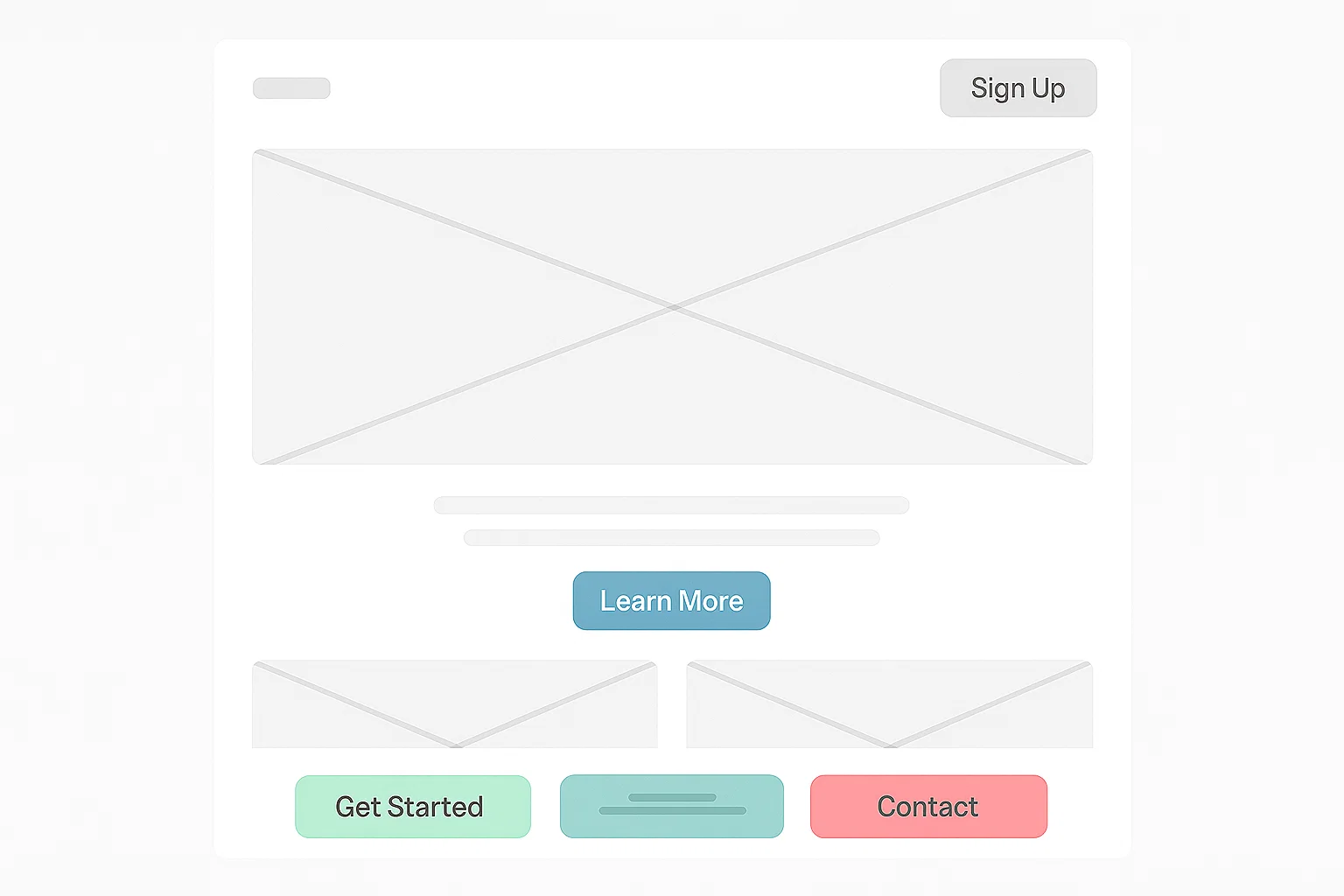Your website might be beautifully designed, loaded with compelling content, and attracting steady traffic—yet still failing to convert visitors into leads. The culprit is often something deceptively simple: ineffective or missing calls-to-action (CTAs). For service-based businesses, CTAs are the bridge between browsing and business, and many companies are leaving money on the table by overlooking critical opportunities to guide visitors toward conversion.
The Strategic Importance of Multiple CTAs
A common misconception is that a website only needs one or two CTAs—typically a “Contact Us” button in the header and perhaps another on the homepage. This approach fundamentally misunderstands how modern consumers interact with service providers. Today’s potential clients are conducting extensive research, visiting multiple pages, and consuming various types of content before making contact. Each stage of this journey requires different CTAs that match the visitor’s mindset and readiness to engage.
Strategic CTA placement recognizes that not every visitor arrives at your site ready to commit. Some are just beginning to research their problem, others are comparing service providers, and a select few are ready to hire immediately. Your website needs CTAs that serve all these audiences, creating multiple pathways to conversion that accommodate different decision-making timelines.
The “Get a Free Quote” or “Request a Consultation” CTA
This is your primary conversion CTA and should be prominently featured throughout your site. However, many businesses make the mistake of only placing it on their homepage or contact page. In reality, this CTA should appear on every service page, in your blog sidebar, and even within relevant blog content.
The key to maximizing its effectiveness is positioning it contextually. When a visitor finishes reading about a specific service, they should immediately see an opportunity to request a quote for that exact service. This reduces friction and captures interest at the moment of peak engagement.
Consider offering multiple formats for this CTA: a simple button for quick action, and a more detailed form for those ready to provide comprehensive information about their needs. Some visitors prefer speed, while others want to explain their situation thoroughly from the start.
The Email Newsletter Signup CTA
One of the most overlooked CTAs on service websites is the email newsletter subscription. Many business owners dismiss this as irrelevant for service-based businesses, assuming that only e-commerce sites benefit from email lists. This is a critical mistake.
Not every visitor who finds your website is ready to hire a service provider today. They might be in early research stages, comparing options, or simply not ready to commit to the investment. An email newsletter allows you to capture these potential leads and nurture them until they’re ready to convert.
Your newsletter signup should offer clear value: industry insights, helpful tips, case studies, or exclusive offers. Place this CTA strategically in your blog sidebar, within blog content after delivering valuable information, and as a footer option on every page. Consider implementing exit-intent popups that present this option when visitors show signs of leaving without converting.
The Downloadable Resource or Lead Magnet CTA
Service-based businesses often miss opportunities by failing to offer downloadable resources that demonstrate expertise while capturing contact information. These lead magnets might include guides, checklists, templates, white papers, or industry reports that provide genuine value to your target audience.
For example, a digital marketing agency might offer a “20-Point Website Audit Checklist,” while a financial advisory firm could provide a “Retirement Planning Calculator.” These resources give visitors something tangible in exchange for their email address, creating a psychological contract that establishes trust and positions you as a helpful expert.
The CTA for these resources should appear on relevant service pages, within blog posts that discuss related topics, and as targeted offers based on the content the visitor is consuming. Make the value proposition crystal clear: what will they receive, and how will it help them solve their problem?
The Social Proof and Review CTAs
Most service websites display testimonials and reviews, but few actively encourage visitors to explore more social proof through strategically placed CTAs. Adding buttons like “See More Success Stories,” “Read Client Reviews,” or “View Our Portfolio” gives interested prospects an easy path to finding the validation they need.
These CTAs are particularly effective when placed near your primary conversion CTAs. A potential client who’s almost ready to request a quote might just need a little more reassurance. A well-placed CTA that directs them to case studies or testimonials can provide that final push toward conversion.
Additionally, don’t forget CTAs that encourage satisfied clients to leave reviews. A simple “Share Your Experience” button on your thank-you page or in follow-up emails can help you continuously build social proof.
The Content Engagement CTAs
Within your blog posts and resource pages, you need CTAs that encourage deeper engagement with your content. These might include “Download the Full Guide,” “Watch Our Video Tutorial,” “Schedule a Demo,” or “Get Expert Help with This.”
These CTAs acknowledge that some visitors prefer different content formats. Someone reading a blog post about SEO strategies might be more willing to watch a video that demonstrates techniques, while another visitor might want to download a comprehensive guide to study later.
By offering these alternative engagement options, you increase the chances of converting different personality types and learning styles. These CTAs also help you segment your audience based on their interests and behaviors, enabling more targeted follow-up communication.
The Chat or “Talk to an Expert” CTA
Live chat functionality has become increasingly important for service websites, yet many businesses either don’t implement it or hide it away in a corner of their homepage. A proactive “Chat with Us” or “Talk to an Expert” CTA can dramatically increase engagement and lead generation.
This CTA is particularly valuable for visitors who have questions that are preventing them from taking the next step. Rather than leaving your site to find answers elsewhere, they can get immediate clarification. Even if you use a chatbot for initial responses, you’re capturing contact information and demonstrating accessibility.
Position chat CTAs strategically on high-value pages, such as service pages and pricing information. Consider implementing proactive chat invitations that appear after a visitor has spent a certain amount of time on a page, signaling serious interest.
The Phone Number CTA
In the mobile-first era, clickable phone numbers are essential CTAs that many websites fail to optimize. Your phone number should be prominently displayed in your header and should be clickable on mobile devices, allowing instant calling with a single tap.
Consider adding context-specific phone CTAs, such as “Call Now for Emergency Service” or “Speak with a Specialist Today.” These create urgency and clearly communicate the value of calling immediately rather than filling out a form.
The Secondary Conversion CTAs
Not every visitor is ready for your primary conversion goal. Secondary CTAs offer lower-commitment options that keep potential clients engaged. These might include “Follow Us on Social Media,” “Subscribe to Our YouTube Channel,” or “Join Our LinkedIn Community.”
While these don’t directly generate leads, they keep your brand visible and build relationships that can eventually result in conversions. Place these CTAs in your footer, blog sidebar, and anywhere else where they won’t interfere with primary conversion paths but still provide an option for continued engagement.
Best Practices for CTA Implementation
Regardless of which CTAs you implement, certain best practices apply universally. Use action-oriented language that clearly states what will happen when the visitor clicks. Create visual contrast so CTAs stand out from surrounding content. Test different colors, copy, and placements to optimize performance.
Ensure that your CTAs are appropriately sized for mobile devices and easy to tap without zooming. Every CTA should lead to a logical next step with minimal friction—no broken links, confusing forms, or unclear processes.
Conclusion
The most beautifully designed website with the most compelling content will underperform if it lacks strategic CTAs that guide visitors toward conversion. By implementing these essential calls-to-action that most service websites overlook, you create multiple pathways for visitors at different stages of the decision-making process to engage with your business. The result is increased leads, improved conversion rates, and better return on your website investment.

